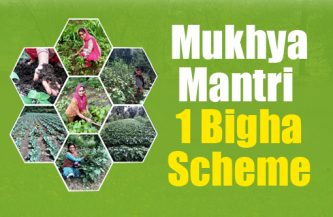Himachal promoting conservation and cultivation of medicinal plants

Himachal Pradesh is bestowed with rich biological diversity. For the promotion of medicinal plants and related activities in the hill state, the State Medicinal Plants Board has been functioning in the State under the aegis of Ayush Department. The focus is consideration of economic need and easy availability of medicinal plants for the manufacture of Ayurvedic medicines.
The National Ayush Mission (NAM) in the year 2019-20 has provided financial assistance of about Rs. 128.94 lakh for medicinal plants component in the state. Out of this, Rs. 25 lakh has been allocated for one model nursery and Rs. 12.5 lakh for two small nurseries, Rs. 54.44 lakh for the cultivation of Atis, Kutki, Kuth, Shatavari, Stevia and Sarpagandha, Rs. 20 lakh for construction of drying shed and storage godown and Rs. 17 lakh for flexible component.
To generate awareness among masses of the State about medicinal plants, the plantation drive, ‘Charak Vatika’ was carried out by the AYUSH department for two weeks in Phase-I, in which Charak Vatikas were established in 1167 Ayurvedic institutions and about 11,526 plants were planted. Phase-II of Charak Vatika has been started on 7th June, 2021.
The State, having diverse climatic conditions, is home to nearly 640 species of medicinal plants which are distributed along the four agro-climatic zones. Tribal districts like Kinnaur, Lahaul-Spiti, Kullu, a few areas of Kangra and Shimla districts located at an altitude of over 2,500 metres, produce enormously useful medicinal plants. Some of these include Patis, Batsnabh, Atis, Tragen, Kirmala, Ratanjot, Kala jeera, Kesar, Somlata, Jangli heeng, Charma, Khursani ajwain, Pushkar mul, Hauver, Dhop, Dhamni, Nechni, Neri, Kejavo, Dhop Chrelu, Sharger, Gaggr and Buransh.

Besides this, the State government has resorted to regular monitoring of habitats, establishment and conservation of species in situ conditions, and replication of this approach in other parts of the Indian Himalayan Region have been recommended. Awareness about the biodiversity values is being created among the inhabitants and participation of inhabitants in conservation and management of biological resources is being ensured.





